Introduction
Visual art encompasses a wide range of creative expressions that are primarily visual in nature. This includes painting, drawing, sculpture, photography, and more. Visual art holds significant cultural and historical value, as it reflects society’s ideas, emotions, and experiences. Through visual art, artists communicate messages and tell stories that resonate across generations. It also plays a crucial role in personal expression and can evoke powerful emotional responses in viewers. The significance of visual art lies in its ability to transcend language and connect people on a deep, emotional level.
Visual art has evolved significantly over time, showcasing a rich history of styles and techniques. From ancient cave paintings to Renaissance masterpieces, visual art has continually transformed. The advent of modern and contemporary art introduced abstract and experimental forms. Today, visual art offers a diverse variety, including digital art, mixed media, and street art. This evolution reflects changes in society, technology, and cultural influences, making visual art a dynamic and ever-expanding field. Each era and style contributes to the vast tapestry of visual art, providing endless possibilities for creativity and expression.
1. Painting:
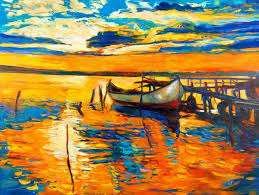
- Oil Painting: Oil painting, a prominent medium in visual art, is known for its rich texture and vibrant colors. This medium uses pigments mixed with oil, typically linseed, to create a thick, slow-drying paint. The characteristics of oil paint allow artists to achieve fine details and smooth blending, resulting in realistic and expressive artworks. In visual art, oil painting is celebrated for its versatility, as it can produce a range of effects from delicate glazes to bold impasto. The durability and depth of color in oil paintings make them a treasured form of visual art throughout history.
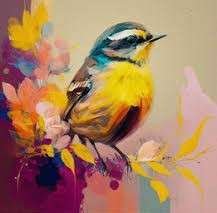
- Acrylic Painting: Acrylic painting is a widely embraced medium in visual art, renowned for its versatility and popularity. Acrylic paints are water-based, allowing for easy cleanup and quick drying times. This characteristic makes them suitable for a variety of techniques, from washes and glazes to thick, textured applications. In visual art, acrylics are celebrated for their ability to adhere to diverse surfaces, including canvas, wood, and metal. Their fast-drying nature enables artists to work quickly and layer efficiently. The vibrant colors and durability of acrylic paints have made them a favorite among contemporary artists, contributing to their widespread use and enduring appeal in the visual art community.
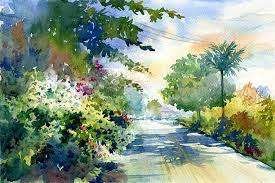
- Watercolor Painting: Watercolor is a unique and cherished medium in visual art, known for its delicate and translucent qualities. Made from pigments suspended in a water-based solution, watercolors produce soft, luminous effects that are difficult to achieve with other mediums. In visual art, the fluidity of watercolors allows for spontaneous and expressive brushstrokes, creating a sense of movement and lightness. Artists can layer washes to build depth or use wet-on-wet techniques for smooth color transitions. The unpredictability of watercolors, with colors blending and bleeding into each other, adds an element of surprise and creativity. These qualities make watercolor a beloved medium in the visual art world, offering endless possibilities for artistic exploration.
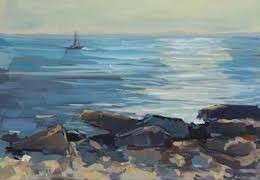
- Gouache Painting: Gouache painting is highly regarded in the realm of visual art for its remarkable opaqueness and vibrant color properties. Unlike watercolor, which is known for its translucency, gouache provides a dense, matte finish that allows for excellent coverage and the ability to layer colors without them merging together. This quality makes gouache ideal for artists who aim to achieve bold, vivid imagery with sharp, clean edges. The vibrancy of gouache colors stems from its rich pigments, which remain bright and intense even after drying, ensuring that the artwork maintains its visual impact over time. Additionally, gouache can be reactivated with water, offering a level of flexibility that is beneficial for both fine detailing and broad, expressive strokes. This medium’s unique characteristics make it a versatile choice for artists, allowing them to explore a wide range of techniques and effects, thereby enhancing the depth and dynamism of their visual art creations.

- Pastel Painting: Pastel painting holds a distinctive place in visual art, celebrated for its unique texture and intense color. Pastels, composed of pure powdered pigments and a minimal binder, deliver a soft, velvety texture that allows for smooth application and blending directly on the canvas or paper. This medium provides artists with the ability to create rich, luminous colors that retain their brilliance over time, a hallmark of pastel art. The high pigment concentration in pastels results in vibrant, saturated hues that can be layered to achieve depth and complexity in the artwork. Additionally, the tactile nature of pastels enables artists to experiment with various techniques, from delicate, feather-light strokes to bold, expressive marks, making it an incredibly versatile tool in the arsenal of visual art. The immediacy and tactile engagement of working with pastels invite a direct connection between the artist and their creation, fostering a spontaneous and intimate expression of artistic vision.
2. Drawing:
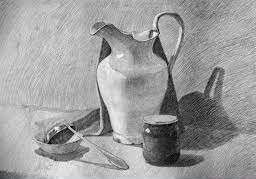
- Pencil Drawing: Pencil drawing is a fundamental and versatile form of visual art, renowned for its precision and exceptional shading potential. The graphite pencil, available in a range of hardness grades, allows artists to achieve remarkable detail and fine lines, making it ideal for intricate and highly detailed work. This medium offers unparalleled control, enabling artists to render delicate textures, subtle gradients, and sharp edges with ease. The shading potential of pencil drawing is immense, as artists can create a vast spectrum of tonal values from the lightest grays to the deepest blacks by varying pressure, layering strokes, and utilizing different pencil grades. This ability to manipulate light and shadow enhances the depth and realism of the artwork, bringing subjects to life with a three-dimensional quality. Pencil drawing’s flexibility also makes it an excellent medium for both quick sketches and fully developed, detailed compositions, allowing artists to explore a wide range of styles and techniques within visual art. The simplicity and accessibility of pencil drawing, combined with its capacity for detailed expression, make it a timeless and essential skill for artists of all levels.
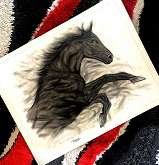
- Charcoal Drawing: Charcoal drawing is a compelling form of visual art celebrated for its deep contrasts and expressive quality. The medium’s essence lies in its ability to capture stark tonal shifts, from the darkest blacks to the softest grays, creating a dynamic interplay of light and shadow that adds depth and dimension to the artwork. Artists harness charcoal’s velvety texture and smudge ability to evoke emotion and atmosphere, whether depicting delicate nuances of human expression or the rugged textures of landscapes. The rich, matte finish of charcoal enhances the drama and intensity of the subject matter, offering a visceral experience that engages viewers on a sensory level. Through skillful manipulation of this versatile medium, artists can convey mood, narrative, and raw emotion with a visceral immediacy that is both captivating and enduring in the realm of visual art.

- Ink Drawing: Ink drawing is a captivating form of visual art characterized by its bold lines and fluidity. This medium allows artists to create striking contrasts and intricate details, resulting in artwork that is both expressive and precise. The fluid nature of ink enables smooth, continuous strokes, while its permanence demands confidence and control from the artist. The intensity of the black ink against the paper’s whiteness creates a dramatic effect, making the artwork visually compelling. In the realm of visual art, ink drawing stands out for its ability to convey depth, movement, and emotion through minimalistic yet powerful means.
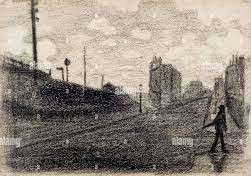
- Chalk and Conte Drawing: Chalk and Conte drawing are beloved techniques in the realm of visual art, known for their ability to create soft textures and exquisite blending effects. Artists favor these mediums for their versatility in producing a wide range of tones and subtle gradients. The softness of chalk allows for smooth transitions between light and shadow, creating a sense of depth and volume in the artwork. Conte, with its slightly harder texture, provides precision and control, enabling fine details alongside broader, more expressive strokes. When used together, these materials can achieve a harmonious balance between delicate shading and bold lines. The blending capabilities of chalk and Conte are unparalleled, allowing artists to seamlessly merge colors and create rich, lifelike images that captivate the viewer. In visual art, these drawing techniques are cherished for their ability to convey both intricate detail and broad, emotive sweeps of color and form.
3. Printmaking:
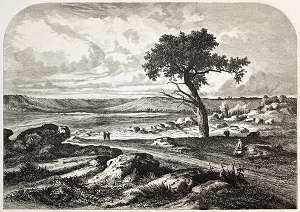
- Etching: Etching is a revered technique in the world of visual art, particularly within the printmaking discipline, known for its meticulous process and the creation of intricate lines. This method involves coating a metal plate, typically copper or zinc, with a waxy, acid-resistant ground. The artist then draws into this ground with a pointed etching needle, exposing the metal beneath. The plate is subsequently immersed in an acid bath, which bites into the exposed lines, creating grooves. Once the etching process is complete, the plate is cleaned, inked, and wiped, leaving ink only in the etched lines. Paper is then pressed onto the plate, transferring the ink and producing a print with finely detailed, crisp lines. The depth of the lines can be varied by controlling the duration of the acid exposure, allowing for a wide range of tonal variations. This technique is prized in visual art for its ability to produce complex, delicate images that convey a high level of detail and texture, making each print a work of remarkable precision and beauty.

- Woodcut: Woodcut is a distinguished technique in visual art, particularly notable within printmaking for its bold, carved designs. This process involves carving an image into the surface of a wooden block, typically using tools such as gouges and knives. The areas of the block that are intended to appear white in the print are cut away, leaving the raised surface to be inked. Once inked, the block is pressed onto paper or fabric, transferring the design. The resulting prints are characterized by their strong, bold lines and high contrast, which lend a dramatic and graphic quality to the artwork. The grain of the wood often adds a unique texture and character to the print, making each piece distinct. This ancient technique, which dates back to the early centuries, continues to be a powerful medium in visual art, allowing artists to create striking and expressive images with a tactile, handcrafted quality.

- Lithography: Lithography is a sophisticated printmaking technique in visual art, renowned for producing smooth and detailed prints. This method involves drawing an image onto a flat stone or metal plate with a greasy substance, such as a specialized lithographic crayon or ink. The surface is then treated with a chemical solution that ensures the drawn areas attract ink while the non-image areas repel it. During printing, the plate is dampened with water, and ink is applied; the ink adheres only to the greasy image and not to the wet areas. When the inked plate is pressed onto paper, it yields a highly detailed and smooth print that captures subtle gradations of tone and intricate details with remarkable precision. Lithography allows for a range of artistic expressions, from delicate lines and fine textures to rich, solid areas of color, making it a versatile and popular choice among printmakers. Its ability to render both fine and broad strokes with equal clarity makes it a powerful tool in the visual art domain, celebrated for its ability to faithfully reproduce an artist’s original drawing or painting.
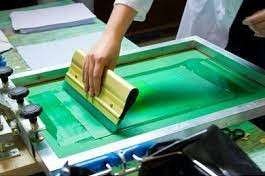
- Screen Printing: Screen printing, a prominent technique in visual art, is widely celebrated for its versatility and effectiveness in graphic design. This printmaking method involves creating a stencil, or screen, through which ink is pushed onto a surface such as paper, fabric, or plastic. The screen, traditionally made of silk but now often composed of synthetic fibers, is tightly stretched over a frame. An artist designs a stencil, blocking out areas where they don’t want the ink to pass through. Once the screen is prepared, ink is poured onto it and a squeegee is used to press the ink through the mesh onto the material below. This process allows for bold, vibrant colors and sharp, crisp lines, making it ideal for posters, t-shirts, and other graphic designs. Screen printing is particularly valued for its ability to produce large quantities of high-quality prints efficiently, maintaining consistency across all copies. Its adaptability to different surfaces and the ability to layer multiple colors with precision make screen printing a popular choice among artists and designers looking to create impactful, eye-catching visual art.
4. Sculpture

- Stone Sculpture: Stone sculpture holds a revered place in visual art, celebrated for its timeless appeal and unparalleled durability. This ancient form of artistic expression involves carving, chiseling, and shaping stone into intricate and enduring works of art. The process demands precision and patience, as artists work meticulously to reveal the forms hidden within blocks of marble, granite, limestone, or other types of stone. Stone sculptures have an innate ability to convey a sense of permanence and grandeur, making them a favorite for monuments, public art, and historical landmarks. Their durability ensures that these sculptures withstand the test of time, weathering natural elements while preserving their beauty and significance. The tactile quality of stone, combined with the skillful manipulation of texture and form, allows artists to create pieces that are both visually striking and evocative. Whether depicting the human figure, abstract forms, or intricate patterns, stone sculpture remains a testament to the enduring power of visual art, embodying both the artist’s vision and the timeless nature of their medium.
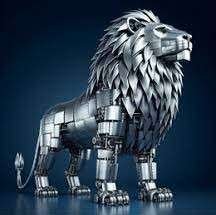
- Metal Sculpture: Metal sculpture is a dynamic and robust form of visual art that harnesses the strength and versatility of metal to create diverse and compelling artworks. This medium allows artists to manipulate materials such as steel, bronze, aluminum, and copper, each offering unique properties that contribute to the final piece’s aesthetic and structural integrity. The process of creating metal sculptures can involve welding, casting, forging, and assemblage, enabling a wide range of techniques and styles. The inherent strength of metal makes it ideal for large-scale public installations and durable outdoor sculptures that can withstand environmental challenges. Additionally, metal’s malleability allows for intricate detailing and bold, abstract forms that push the boundaries of traditional sculpture. The reflective and varying surfaces of metals can be polished, patinated, or textured, adding depth and dimension to the artwork. From sleek, modern pieces to intricate, ornamental designs, metal sculpture showcases the artist’s ability to transform a rigid material into fluid, expressive forms, solidifying its place as a significant and enduring aspect of visual art.
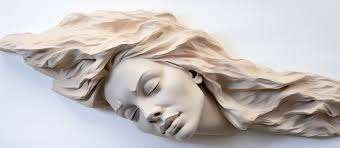
- Clay Sculpture: Clay sculpture, a fundamental form of visual art, offers unparalleled malleability and boundless creative possibilities. This medium, used since ancient times, allows artists to mold, carve, and shape with their hands or tools, facilitating a direct and tactile connection with their work. The pliability of clay makes it an ideal material for both detailed, intricate designs and bold, abstract forms. Artists can choose from various types of clay, such as earthenware, stoneware, and porcelain, each with its own unique properties and firing requirements. The process of working with clay includes building techniques like coiling, slab construction, and wheel throwing, followed by drying and firing in a kiln to achieve the desired hardness and durability. Additionally, clay sculptures can be enhanced with glazes, paints, and surface treatments, adding color and texture to the finished piece. The versatility of clay enables the creation of everything from small figurines to large-scale installations, making it a favorite among artists seeking to explore the full range of their imaginative capabilities within the realm of visual art.

- Wood Sculpture: Wood sculpture, a cherished form of visual art, embodies the warmth and natural beauty inherent in its material. The unique grain patterns and rich hues of various wood types, such as oak, mahogany, and walnut, offer a diverse palette for artists to explore. Sculptors can carve, whittle, and shape wood using tools like chisels, gouges, and saws, each stroke revealing the organic intricacies of the timber. The tactile nature of wood allows for a deep connection between the artist and their medium, resulting in pieces that range from lifelike representations to abstract forms. The natural beauty of wood, coupled with its ability to be polished, stained, or painted, adds layers of aesthetic depth and complexity. Additionally, wood’s renewable nature makes it an eco-friendly choice, further enhancing its appeal. The warmth and texture of wood sculptures bring a sense of life and vitality to spaces, making them timeless additions to collections and galleries. Through the art of wood sculpture, artists celebrate the harmony between nature and creativity, showcasing the profound impact of visual art on human experience.
5. Photography:
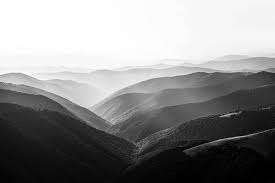
- Black and White Photography: Black and white photography, a revered form of visual art, is celebrated for its classic aesthetic and profound emphasis on contrast. By stripping away the distraction of color, this medium highlights the intricate play of light and shadow, drawing attention to the textures, shapes, and forms within the frame. The stark contrast inherent in black and white imagery allows photographers to create powerful compositions that evoke deep emotions and timeless beauty. This approach to photography often brings a heightened sense of drama and mood, as the absence of color emphasizes the tonal variations and the subtleties of grayscale. Each image, whether it captures a serene landscape, an evocative portrait, or an urban scene, tells a compelling story through its rich contrasts and detailed nuances. The focus on these elements transforms ordinary moments into extraordinary visual narratives, making black and white photography a cornerstone of visual art that continues to captivate and inspire both artists and audiences alike.

- Color Photography: Color photography, a dynamic form of visual art, celebrates the vibrancy and diversity that colors bring to imagery. This medium leverages the full spectrum of hues to create visually compelling compositions that resonate with life and energy. The variety of color photos allows artists to convey a vast range of emotions and atmospheres, from the warm, inviting tones of a sunset to the cool, tranquil shades of a forest. The interplay of colors enhances the depth and dimension of a scene, making the subjects more vivid and relatable. Color photography captures the subtleties of the world in a way that engages the viewer’s senses, often evoking a more immediate and visceral response. Whether documenting the natural beauty of landscapes, the rich cultural tapestry of urban environments, or the nuanced expressions in portraiture, color photography enriches the storytelling potential of visual art, offering a limitless palette for artistic expression and interpretation.

- Digital Art Photography: Digital art photography represents a dynamic fusion of traditional photography techniques with modern digital tools and innovations, emphasizing the creation of visually striking images. In recent years, advancements in digital technology have revolutionized this field, enabling photographers to experiment with new forms of expression and creativity. Techniques such as high dynamic range (HDR) imaging, composite imaging, and panoramic stitching have become commonplace, allowing artists to capture scenes with unprecedented detail and depth. Moreover, the integration of software applications like Adobe Photoshop and Lightroom has empowered photographers to manipulate and enhance their images with precision, achieving surreal effects and intricate compositions. The emergence of digital filters, presets, and artificial intelligence-driven editing tools further expands the possibilities for artistic expression in digital art photography. These innovations not only streamline the creative process but also encourage photographers to push the boundaries of traditional visual art, creating captivating images that resonate with contemporary audiences.
6. Digital Art:
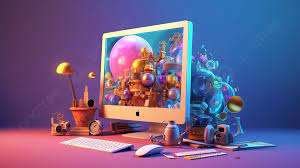
- Computer Graphics: Computer graphics represents a realm where visual art transcends traditional boundaries, offering limitless possibilities and unprecedented precision in artistic expression. Through sophisticated software and hardware advancements, artists can create stunning visual experiences that blend realism with imagination. From intricate 3D modeling and animation to virtual environments and interactive simulations, computer graphics enable artists to simulate and manipulate complex scenarios with meticulous detail. The precision afforded by digital tools allows for the creation of photorealistic scenes, intricate textures, and lifelike animations that were once inconceivable. Moreover, advancements in rendering technologies and real-time graphics have revolutionized industries ranging from entertainment and advertising to education and scientific visualization. Artists can now sculpt virtual worlds, design architectural marvels, and craft fantastical creatures with unparalleled realism and artistic vision, pushing the boundaries of what is visually possible. Computer graphics thus stands as a cornerstone of modern visual art, merging technology with creativity to inspire and captivate audiences worldwide.
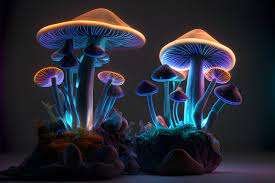
- 3D Art: 3D art exemplifies a pinnacle of visual artistry through its unparalleled realism and immersive capabilities. Utilizing advanced software tools and techniques, 3D artists meticulously sculpt and render three-dimensional objects, environments, and characters with lifelike detail and texture. The pursuit of realism in 3D art involves mastering lighting, shading, and texture mapping to simulate real-world materials and environments convincingly. This realism not only enhances visual fidelity but also enriches the immersive experience for viewers, drawing them into intricately crafted virtual worlds. Beyond static imagery, 3D art extends into animation and interactive media, where artists can bring characters to life with fluid movements and emotional depth. Whether used in films, video games, virtual reality, or architectural visualization, 3D art continues to redefine visual storytelling by offering artist’s unprecedented creative freedom and audiences captivating, lifelike experiences that blur the lines between reality and imagination.

- Digital Collage: Digital collage is a vibrant form of visual art that involves the skillful combination of disparate elements to create cohesive and often surreal compositions. Unlike traditional collage techniques that use physical materials like paper and photographs, digital collage utilizes digital tools such as image editing software to seamlessly blend photographs, graphics, textures, and typography. Artists can layer, manipulate, and transform these elements with precision, allowing for endless creative possibilities. The process often involves juxtaposing unrelated images or concepts to evoke new meanings or emotions, challenging viewers to reconsider familiar subjects in unexpected ways. Digital collage artists leverage the flexibility of digital media to experiment with scale, perspective, and color, producing dynamic artworks that oscillate between the familiar and the fantastical. This medium not only celebrates the accessibility and versatility of digital technology but also encourages artistic innovation by bridging traditional and contemporary visual aesthetics.
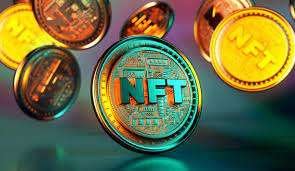
- NFTs: Non-fungible tokens (NFTs) have emerged as a groundbreaking phenomenon within the realm of visual art, revolutionizing how digital artworks are created, owned, and exchanged. NFTs are unique digital assets authenticated using blockchain technology, which ensures their scarcity, provenance, and ownership. Artists create NFTs by tokenizing their digital artworks—whether they are images, animations, videos, or interactive pieces—granting each work a distinct identity and digital certificate of authenticity. This innovation has democratized art ownership and distribution, allowing artists to bypass traditional gatekeepers and connect directly with global audiences through online platforms and marketplaces. NFTs enable artists to monetize their digital creations, often selling them in auctions or through direct sales, while collectors gain ownership rights and the ability to trade or display these artworks in virtual and physical spaces. Despite controversies and debates surrounding environmental impact and market volatility, NFTs continue to redefine notions of value, ownership, and creativity in the digital age, opening new avenues for artists to explore and audiences to engage with visual art in innovative and decentralized ways.
7. Mixed Media:
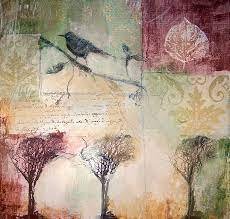
- Collage: Collage is a versatile and expressive form of visual art that integrates various materials such as paper, fabric, photographs, and other found objects into a cohesive composition. Originating in the early 20th century with artists like Pablo Picasso and Georges Braque, collage techniques have evolved to encompass a wide range of styles and approaches. Artists typically cut or tear materials into pieces and then arrange and glue them onto a surface to create layered textures and juxtapositions. This process allows for a dynamic interplay of colors, shapes, and textures, often resulting in artworks that invite viewers to explore intricate details and hidden narratives. Collage artists often blend different media and techniques, from traditional methods to digital manipulation, pushing the boundaries of visual storytelling and creative expression. By incorporating elements of everyday life and personal symbolism, collage not only captures the essence of its materials but also challenges conventional notions of composition and representation in contemporary visual art.
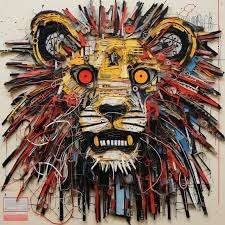
- Assemblage: Assemblage stands as a captivating form of visual art distinguished by its technique of arranging found objects into intricate three-dimensional compositions. Originating in the early 20th century alongside the Dada and Surrealist movements, assemblage artists such as Marcel Duchamp and Joseph Cornell transformed everyday materials—like wood, metal, textiles, and even discarded items—into thought-provoking artworks. This technique involves the meticulous selection and arrangement of objects to evoke new meanings and narratives, often blurring the line between art and ordinary life. Assemblage artworks range from small-scale sculptures and shadow boxes to large installations, each piece challenging viewers to reconsider the inherent beauty and significance of overlooked objects. Through assemblage, artists explore themes of memory, identity, and cultural commentary, imbuing their compositions with layers of symbolism and personal history. This art form continues to evolve, influencing contemporary artists who reinterpret and expand upon its principles to create compelling visual experiences that resonate with audiences worldwide.
8. Mosaic Art:
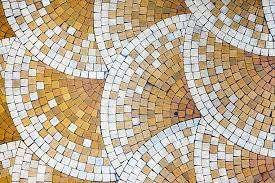
- Tile Mosaics: Tile mosaics represent a time-honored form of visual art that employs a traditional technique of arranging small, colored tiles—often made of ceramic, glass, or stone—into elaborate and visually striking designs. Originating in ancient civilizations such as Mesopotamia, Greece, and Rome, tile mosaics have endured through the ages, adorning architectural facades, public spaces, and religious structures with their intricate patterns and vibrant colors. The process typically involves meticulously cutting and arranging tiles to form detailed images, geometric patterns, or narrative scenes. Artists and craftsmen meticulously plan each piece, considering color harmony, texture, and scale to achieve aesthetic balance and impact. Tile mosaics not only showcase technical skill but also serve as cultural artifacts, reflecting the artistic traditions and historical narratives of their creators. Today, tile mosaics continue to inspire contemporary artists and designers, who explore new materials, techniques, and applications while honoring the rich heritage and enduring beauty of this ancient art form.
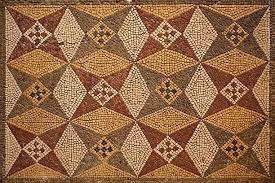
- Pebble Mosaics: Pebble mosaics exemplify a captivating form of visual art that harnesses the natural beauty and tactile qualities of small stones and pebbles to create intricate and textured designs. This ancient technique dates back to early civilizations, where artists used locally sourced pebbles and stones to embellish pathways, floors, and architectural elements. The process involves selecting pebbles of varying sizes, shapes, and colors, then arranging them meticulously to form patterns, images, or abstract compositions. Artists often integrate different hues and textures to achieve contrast and depth, harnessing the inherent irregularities of each pebble to add organic charm to the artwork. Pebble mosaics not only showcase the artist’s skill in composition and balance but also celebrate the natural diversity of materials, connecting viewers to the earthy origins of each stone. Today, contemporary artists and landscapers continue to explore pebble mosaics for their unique aesthetic appeal and sustainable qualities, blending artistic expression with environmental consciousness in creating enduring visual experiences.
9. Street Art:

- Graffiti: Graffiti represents a bold and expressive form of visual art that has its roots in urban environments, characterized by its vibrant colors, intricate designs, and often provocative messages. Emerging from street culture and countercultural movements, graffiti artists use spray paint, markers, and stencils to adorn public spaces such as walls, bridges, and train cars with their distinctive artwork. Beyond mere vandalism, graffiti serves as a powerful means of self-expression and social commentary, addressing issues of politics, identity, and community. Artists often adopt pseudonyms or “tags” to mark their work, contributing to a subculture that values creativity, risk-taking, and artistic innovation. While graffiti has faced legal and social challenges due to its association with illegal tagging, it has also gained recognition as a legitimate art form, influencing contemporary art, fashion, and design. Today, graffiti artists continue to push boundaries and challenge conventions, transforming urban landscapes into dynamic canvases that provoke thought, inspire dialogue, and celebrate the vibrant diversity of visual expression.
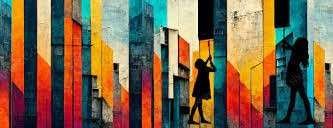
- Mural Paintings: Mural painting stands as a monumental form of visual art that encompasses large-scale artworks created directly on walls or other sizable surfaces. Spanning various cultures and historical periods, murals serve as powerful vehicles for conveying messages, stories, and cultural identities to the public. Artists utilize diverse techniques, including paint, mosaic, and digital projection, to transform urban landscapes, architectural facades, and interior spaces into vibrant and immersive canvases. Often commissioned for public spaces, murals engage viewers with their scale and detail, inviting them to interact with and contemplate the artwork’s themes and narratives. Beyond mere decoration, murals can address social issues, celebrate cultural heritage, or express political viewpoints, fostering community dialogue and cultural pride. Through their sheer size and visibility, mural paintings not only beautify urban environments but also serve as enduring testaments to the creativity, resilience, and collective identity of the communities they adorn.
10. Textile Art:

- Weaving: Weaving stands as a venerable craft within the realm of visual art, involving the meticulous interlacing of threads or fibers to create textiles of intricate patterns and textures. Originating millennia ago, weaving techniques have evolved across cultures, employing looms and hand techniques to produce fabrics, tapestries, and rugs that blend functionality with aesthetic beauty. Weavers meticulously select fibers such as wool, cotton, silk, or synthetic materials, often dyed to create vibrant colors or subtle gradients. The process involves threading the warp (longitudinal) and weft (transverse) threads through the loom, manipulating them to form patterns through techniques like plain weave, twill, or complex jacquard weaving. Beyond utility, weaving serves as a form of artistic expression, with each textile reflecting the weaver’s skill, creativity, and cultural heritage. Contemporary weavers continue to innovate, blending traditional methods with modern materials and designs to create textiles that not only adorn interiors but also evoke emotions, tell stories, and preserve cultural traditions through the enduring artistry of woven fabrics.

- Tapestry: Tapestry represents a rich and intricate form of visual art distinguished by its use of weaving techniques to create elaborate designs and narrative compositions. Dating back to ancient civilizations such as Egypt and Greece, tapestries have evolved into highly detailed artworks woven on vertical looms using threads of wool, silk, cotton, or synthetic fibers. What sets tapestries apart is their ability to tell stories or depict scenes with remarkable detail and texture, often resembling paintings in their complexity. Artists and weavers carefully plan and execute each piece, employing techniques like shading, blending colors, and incorporating different weaving styles to achieve depth and perspective. Beyond their aesthetic appeal, tapestries historically adorned palaces, churches, and noble residences, serving as both decorative elements and historical records. Today, contemporary tapestry artists continue this tradition, using the medium to explore themes ranging from mythology and folklore to contemporary social issues, blending traditional craftsmanship with innovative approaches to create visually compelling and emotionally resonant artworks that endure as timeless expressions of human creativity.
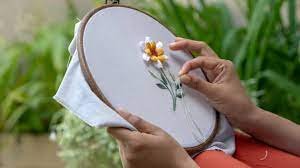
- Embroidery: Embroidery stands as a meticulous and expressive form of visual art, where intricate designs are crafted using needle and thread on fabric. Originating thousands of years ago, embroidery techniques have evolved across cultures, encompassing a wide range of styles from delicate floral patterns to bold geometric motifs. Artists and craftsmen meticulously manipulate threads of various colors and textures, employing stitches such as satin stitch, chain stitch, and cross-stitch to create textures, shading, and intricate details that bring designs to life. Beyond its decorative function, embroidery often carries cultural significance, serving as a means of storytelling, identity expression, and ceremonial adornment. Whether used to embellish clothing, accessories, or standalone artworks, embroidery showcases the artist’s skill, patience, and creativity, transforming plain fabric into vibrant canvases that captivate the eye and evoke tactile sensations. In contemporary contexts, embroidery continues to thrive as artists blend traditional techniques with modern materials and themes, pushing the boundaries of this timeless craft while preserving its rich heritage and enduring appeal as a form of visual art.
11. Installation Art:

- Site-Specific Installations: Site-specific installation art represents a captivating genre within visual art where artworks are meticulously designed to engage and interact with a specific environment or location. Emerging in the mid-20th century as a response to traditional gallery settings, site-specific installations transcend mere decoration by integrating elements of the space—whether architectural, natural, or cultural—into the artwork itself. Artists conceptualize these installations to evoke unique spatial experiences, often utilizing diverse materials such as found objects, light, sound, and digital media to transform the viewer’s perception of the environment. The intention is to immerse viewers in an experiential journey that resonates with the site’s history, atmosphere, or social context. By blurring the boundaries between art and its surroundings, site-specific installations challenge viewers to reconsider their relationship with space and provoke contemplation about the intersections of art, place, and human experience. This genre continues to evolve as artists explore new techniques and technologies, pushing the boundaries of creativity and engagement in contemporary visual art.
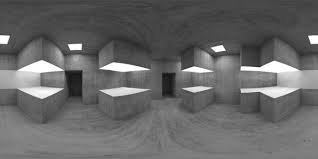
- Immersive Installations: Immersive installation art represents a captivating and transformative genre within visual art, designed to envelop viewers in multisensory experiences that transcend traditional boundaries of perception. Utilizing a diverse range of mediums including sculpture, light, sound, video, and interactive technology, immersive installations transport participants into alternative realities or heightened sensory environments. These artworks often invite active participation, encouraging viewers to explore, interact, and engage with the space and its elements. By manipulating spatial dynamics, light, and sound, artists create environments that evoke emotional responses, provoke introspection, or convey complex narratives. Immersive installations challenge conventional notions of passive observation, instead fostering a deep, visceral connection between the artwork and its audience. Whether evoking awe, contemplation, or introspection, these installations push the boundaries of sensory perception and spatial awareness, inviting viewers to immerse themselves fully in the artist’s vision and experience visual art in a profoundly personal and transformative manner.
12. Conceptual Art:
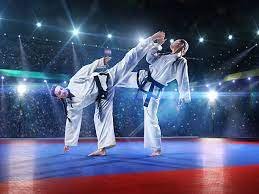
- Performance Art: Performance in conceptual art represents a profound exploration of live action and artistic expression within the realm of visual art, emphasizing ideas and concepts over traditional aesthetic concerns. Originating in the 1960s alongside the conceptual art movement, performances in this context often serve as vehicles for exploring complex themes, philosophical inquiries, and social critiques. Artists use their bodies, actions, and interactions with audiences to convey abstract concepts, challenge established norms, or provoke intellectual engagement. Unlike traditional performance art, which may prioritize the immediacy of the experience, conceptual art performances frequently involve meticulous planning and scripting to articulate specific ideas or narratives. These performances may unfold in galleries, public spaces, or even through documentation and dissemination in various media formats. By blurring the lines between art and life, performance in conceptual art invites viewers to reconsider the nature of artistic experience, the role of the audience, and the boundaries of visual expression, fostering critical discourse and expanding the possibilities of contemporary art practices.
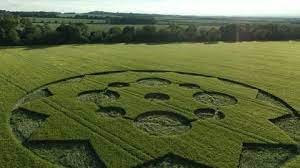
- Land Art: Land art, within the realm of conceptual art, represents a profound engagement with nature and the environment, where artists utilize natural materials and landscapes as integral components of their creative expression. Emerging in the late 1960s and early 1970s, land art pioneers such as Robert Smithson, Michael Heizer, and Walter De Maria sought to challenge traditional notions of art-making by moving beyond gallery walls and urban settings. These artists ventured into remote natural landscapes, deserts, and rural areas to create monumental artworks that interacted harmoniously—or provocatively—with the environment. Often ephemeral and impermanent in nature, land art pieces such as earthworks, sculptures, and site-specific installations were crafted using materials like rocks, soil, plants, and even water bodies, emphasizing the interconnectedness between art, nature, and human intervention. By situating their artworks within natural contexts, land artists aimed to provoke reflections on ecological awareness, human impact on landscapes, and the fleeting nature of existence. Through photography and documentation, these artworks endure in visual form, capturing the essence of their transient interactions with the natural world and continuing to inspire contemporary artists to explore new ways of engaging with and interpreting our environment through visual art.
13. Video Art:
- Experimental Video: Experimental video art pushes the boundaries of traditional filmmaking and visual storytelling, embracing a diverse range of techniques, concepts, and technologies to create innovative and thought-provoking visual experiences. Emerging in the mid-20th century alongside advancements in video technology, experimental video art explores unconventional narratives, abstract forms, and avant-garde aesthetics. Artists harness video cameras, editing software, and digital effects to manipulate time, space, and perception, blurring the lines between reality and imagination. Unlike commercial cinema, which often prioritizes linear storytelling, experimental video art embraces spontaneity, improvisation, and the exploration of visual and auditory textures. Artists may incorporate found footage, animation, performance, and multimedia elements to construct immersive and multisensory environments that challenge viewers’ perceptions and evoke emotional responses. By embracing experimentation and pushing the technical and conceptual limits of the medium, experimental video art continues to expand the possibilities of visual expression, offering new insights into human experience, societal issues, and the evolving intersection of technology and creativity in contemporary visual art.
- Projection Mapping: Projection mapping represents a cutting-edge approach within video art, where artists utilize advanced technology to transform physical surfaces—such as buildings, sculptures, or indoor spaces—into dynamic canvases for visual storytelling and artistic expression. Emerging in the late 20th century and gaining prominence in the digital age, projection mapping leverages video projectors, 3D mapping software, and often intricate computer-generated imagery (CGI) to precisely align and project visuals onto complex architectural or sculptural forms. Unlike traditional flat screens, projection mapping allows artists to manipulate and augment the perception of space, creating illusions of movement, depth, and transformation that interact seamlessly with the physical environment. This technique not only enhances the aesthetic impact of public spaces but also invites viewers to engage with immersive narratives, abstract geometries, and interactive elements that challenge conventional notions of visual art and spatial perception. Projection mapping thus exemplifies the innovative fusion of technology and creativity, pushing the boundaries of video art to create mesmerizing, site-specific installations that captivate audiences and redefine the possibilities of visual storytelling in contemporary art.
14. Ceramics:
- Functional Ceramics: Functional ceramics encompass a rich tradition within visual art where skilled artisans craft pottery and utilitarian items that marry aesthetic beauty with practical functionality. Rooted in ancient civilizations and enduring through centuries of cultural evolution, functional ceramics involve the shaping, firing, and glazing of clay to create vessels, tableware, and household objects. Artists and potters meticulously hand-build or throw clay on a wheel, shaping it into forms that range from simple, elegant bowls to intricately detailed teapots and vases. The firing process, often in kilns, transforms the clay into durable ceramics, while glazes add color, texture, and protective finishes. Beyond their utilitarian purpose, functional ceramics showcase the artist’s mastery of form, balance, and surface treatment, celebrating the tactile qualities and visual appeal of handmade objects. Today, contemporary ceramic artists innovate by blending traditional techniques with modern aesthetics, exploring new forms, textures, and glazing techniques that reflect personal expression and cultural narratives. Functional ceramics thus embody a timeless synthesis of artistry and utility, enriching daily rituals and spaces with enduring craftsmanship and aesthetic pleasure.
- Sculptural Ceramics: Sculptural ceramics represent a dynamic intersection of craftsmanship and artistic expression within visual art, where clay is molded, carved, and fired into three-dimensional forms that transcend functional utility to evoke emotion, narrative, and aesthetic contemplation. Dating back millennia and evolving across diverse cultures, sculptural ceramics encompass a wide range of techniques and styles. Artists manipulate clay by hand-building or throwing on a wheel, sculpting intricate details, textures, and abstract shapes that capture movement, emotion, or conceptual themes. The firing process, often multiple times at varying temperatures, transforms raw clay into enduring ceramic sculptures, while glazes or surface treatments add depth, color, and tactile allure. Unlike traditional sculpture mediums, ceramics offer unique challenges and possibilities due to clay’s plasticity and transformation through firing. Contemporary sculptural ceramicists innovate by blending traditional techniques with modern materials and conceptual approaches, pushing boundaries of form, scale, and narrative. Through their tactile presence and visual impact, sculptural ceramics engage viewers in a dialogue that bridges the ancient artistry of pottery with contemporary explorations of materiality, form, and cultural identity within the realm of visual art.
15. Glass Art:
- Stained Glass: Stained glass is a captivating form of visual art that involves crafting intricate and colorful designs by piecing together various shapes and colors of glass. Each piece of glass is meticulously cut, shaped, and then assembled using lead came or copper foil to create detailed images and patterns. The vibrant hues and translucent nature of the glass allow light to pass through, creating a mesmerizing effect that changes with the intensity and angle of the light source. This art form has been historically significant in the decoration of churches, cathedrals, and other grand buildings, often depicting religious scenes, heraldic symbols, or abstract patterns. Stained glass windows are not only visually stunning but also imbue spaces with a sense of reverence and beauty, making them a timeless element of visual art.
- Blown Glass: Blown glass is an enchanting form of visual art that involves shaping molten glass using heat and various blowing techniques. The process begins by heating glass to a molten state, at which point it becomes pliable. Artists then gather the molten glass on the end of a blowpipe and use their breath to blow and expand it into a bubble. By skillfully rotating, blowing, and manipulating the glass with tools, they can create intricate shapes and forms, ranging from delicate ornaments to substantial sculptures. The vibrant colors and fluid forms achievable with blown glass make it a unique medium in visual art, offering endless creative possibilities. This art form requires a combination of technical precision and artistic vision, resulting in pieces that are both visually stunning and a testament to the artist’s skill and creativity.
16. Calligraphy Art:
- Western Calligraphy: Western calligraphy, a refined form of visual art, involves the meticulous use of various writing instruments to craft elegant letterforms. Artists employ tools such as broad-tipped pens, dip pens, and brushes, each contributing to the distinctive strokes and flourishes characteristic of Western calligraphy. This art form emphasizes precision and style, with techniques like the pointed pen creating delicate lines and the broad-edged pen producing bold, sweeping characters. The process involves careful attention to the formation of each letter, spacing, and the overall composition, resulting in beautifully balanced and harmonious texts. The rich history of Western calligraphy, rooted in ancient scripts and evolving through medieval manuscripts to modern interpretations, showcases its enduring appeal and versatility. Through this expressive medium, calligraphers transform written words into visual art, adding depth and beauty to the communication of ideas and emotions.
- Eastern Calligraphy: Eastern calligraphy, a profound aspect of visual art, encompasses the rich traditions of Arabic, Chinese, and Japanese calligraphy. Each of these traditions is deeply rooted in history and cultural significance, employing unique techniques and philosophies. Arabic calligraphy, known for its intricate and flowing script, often adorns religious texts and architectural decorations, emphasizing the spiritual and artistic beauty of the written word. Chinese calligraphy, with its brush and ink, captures the essence of characters through varying brushstrokes, reflecting the calligrapher’s emotions and the natural world. Japanese calligraphy, or “shodo,” similarly values the harmony of brush movement, ink, and paper, embodying simplicity and mindfulness. These Eastern calligraphic traditions celebrate the art of writing as a meditative practice, transforming characters into expressive forms that convey both meaning and aesthetic elegance. Arabic calligraphy is a revered art form that transforms the written word into visually stunning designs, often seen in religious texts and architectural adornments. Known for its intricate, flowing script, it emphasizes both spiritual significance and artistic beauty. The practice of Arabic calligraphy involves meticulous skill and creativity, making it a timeless and influential component of visual art. Through this visual art, calligraphers honor their cultural heritage while creating timeless pieces that resonate with viewers across generations.
17. Animation Art:
- 2D Animation: 2D Animation art, a captivating branch of visual art, encompasses both traditional and digital techniques to create engaging two-dimensional animations. Traditional 2D animation involves hand-drawing each frame, a painstaking process that demands precision and creativity, allowing artists to imbue characters and scenes with expressive details and fluid movement. In contrast, digital 2D animation employs software to streamline the process, offering tools to manipulate images, add effects, and enhance consistency. Both methods share the common goal of bringing illustrations to life, creating dynamic and immersive stories. This art form’s versatility and accessibility make it a vital and vibrant aspect of the visual art world, influencing everything from entertainment to education.
3D Animation: 3D Animation art, a dynamic facet of visual art, involves the creation of three-dimensional characters and worlds brought vividly to life through motion. Unlike its 2D counterpart, 3D animation utilizes advanced software to model, texture, rig, and animate digital sculptures, resulting in a more realistic and immersive visual experience. The process begins with the creation of a digital model, which is then textured to add color and detail, rigged with a skeletal structure for movement, and finally animated to perform actions and convey emotions. This art form allows for unparalleled depth and complexity, making it a cornerstone in industries like film, video games, and virtual reality. By pushing the boundaries of what can be visualized and experienced, 3D animation continues to evolve, driving innovation and expanding the possibilities within the visual art realm.
18. Miniature Art:
- Miniature Painting: Miniature painting, a remarkable form of visual art, involves the meticulous creation of small, highly detailed pieces that captivate viewers with their precision and beauty. This art form demands a steady hand and a keen eye for detail, as artists use fine brushes and magnification tools to render intricate scenes on a small scale. Historically, miniature paintings have adorned manuscripts and books, serving as illustrations and decorations. The subjects often range from portraits and landscapes to mythological and religious themes. The vibrancy and finesse of miniature paintings are achieved through the use of rich, opaque colors and meticulous layering techniques. Each stroke is deliberate, and the compositions are often dense with detail, allowing for a profound sense of depth and realism despite their small size. The dedication and patience required for this art form highlight the artist’s craftsmanship and the enduring appeal of miniature painting in the realm of visual art.
Miniature Sculpture: Miniature sculpture, a captivating aspect of visual art, involves creating small-scale three-dimensional artworks that require extraordinary precision and detail. These diminutive sculptures, whether they depict figurines, animals, or intricate scenes, showcase the artist’s skill in manipulating materials such as clay, metal, wood, or resin. The process of crafting miniature sculptures is meticulous, demanding a steady hand, sharp tools, and a keen eye for minute details. Despite their size, these sculptures can convey a remarkable sense of scale and proportion, capturing the essence and intricacies of larger subjects. The artistry involved in miniature sculpture not only highlights technical prowess but also invites viewers to engage with the artworks up close, appreciating the delicate craftsmanship and the narrative encapsulated within these tiny yet compelling pieces.
19. Immersive Art:
- Virtual Reality (VR) Art: Virtual reality art represents a groundbreaking development in visual art, utilizing advanced technology to create interactive and immersive experiences. This innovative art form allows artists to construct entire virtual environments where viewers can explore and engage with the artwork in a way that transcends traditional boundaries. By donning VR headsets, users can step into these digital worlds, experiencing art from multiple perspectives and interacting with elements in real-time. The fusion of visual creativity and virtual reality technology enables artists to craft dynamic, multidimensional pieces that can evoke powerful emotions and offer unique narratives. VR art expands the possibilities of artistic expression, transforming passive observation into active participation, and pushing the boundaries of what visual art can achieve in the digital age.
Augmented Reality (AR) Art: Augmented reality (AR) art seamlessly blends digital elements with the physical world, creating immersive and interactive visual art experiences. By superimposing computer-generated imagery, sounds, and other sensory inputs onto the real environment, AR art transforms traditional spaces into dynamic canvases where the boundaries between reality and imagination blur. Artists leverage AR technology to enhance physical artworks, such as paintings, sculptures, and installations, with digital layers that can respond to viewers’ movements or touch. This convergence of the tangible and the virtual opens up new dimensions of creative expression, allowing artists to experiment with temporality, spatial relationships, and audience engagement in unprecedented ways. AR art not only redefines the possibilities of visual art but also invites viewers to become active participants in the artistic experience, exploring and interacting with augmented layers that enrich their perception of the physical world.
20. Interactive Art:
- Installations: Interactive installation art is a captivating domain of visual art that invites viewers to actively engage with the artwork, both physically and digitally. These installations transform static art into dynamic experiences, encouraging participants to touch, move through, or interact with various elements, often altering the piece in real-time. Artists employ a wide range of technologies, such as sensors, augmented reality, video projections, and soundscapes, to create immersive environments that respond to the viewer’s actions. This engagement can involve simple physical interaction, like walking through a space or touching a surface, or more complex digital interactions, such as manipulating virtual objects or triggering visual and auditory effects. By making the audience an integral part of the artwork, interactive installations blur the lines between creator and observer, fostering a collaborative and evolving art experience. These installations challenge traditional notions of visual art, creating unique, personalized encounters that deepen the viewer’s connection to the art and invite exploration of new artistic possibilities.
- Kinetic Art: Kinetic art is a fascinating branch of visual art that incorporates movement, often driven by mechanics or natural forces, to bring artworks to life. These dynamic pieces can be powered by motors, wind, water, or even human interaction, creating a captivating interplay between motion and form. Artists who specialize in kinetic art explore the aesthetics of movement, using it to convey a sense of energy, change, and the passage of time. The movement can be subtle, like the gentle swaying of a mobile, or dramatic, involving complex mechanical systems that create intricate patterns and rhythms. This integration of motion adds a temporal dimension to visual art, transforming static objects into evolving experiences that engage viewers in a continuously shifting visual dialogue. Kinetic art challenges traditional perceptions of art as static and immutable, offering a dynamic and interactive alternative that reflects the ever-changing nature of the world around us. Through the incorporation of movement, kinetic artists expand the possibilities of visual expression, inviting viewers to experience art in a more immediate and visceral way.
21. Light Art:
- LED Art: LED art is an innovative and vibrant form of visual art that utilizes light-emitting diodes (LEDs) to create colorful and dynamic displays. Artists employ LEDs due to their versatility, brightness, and energy efficiency, crafting pieces that range from intricate light sculptures to expansive installations. These artworks can emit a wide spectrum of colors and can be programmed to change patterns, intensity, and hues, resulting in mesmerizing effects that captivate viewers. The flexibility of LEDs allows for precise control over light, enabling artists to explore the interplay of color, shadow, and space in ways that were previously unimaginable. LED art often integrates with digital technology, incorporating sensors and interactive components that respond to the presence or actions of the audience, thus creating an immersive and engaging experience. This fusion of technology and visual art not only enhances the aesthetic appeal but also opens up new avenues for creative expression. By harnessing the power of light, LED artists push the boundaries of traditional visual art, transforming environments and challenging perceptions with their luminous and ever-evolving creations.
- Projection Mapping: Projection mapping is a cutting-edge technique in visual art that involves projecting images onto physical surfaces, transforming them into dynamic canvases. This method allows artists to manipulate light and shadow, creating the illusion that static objects are coming to life. By precisely mapping the contours and features of a surface, whether it be a building facade, a sculpture, or an interior space, artists can seamlessly blend digital content with the physical world. Projection mapping enables the creation of stunning visual effects that can change the appearance of a surface dramatically, from altering textures and colors to animating scenes that interact with the structure’s architecture. This technology can produce immersive environments that captivate audiences, making them feel as though they are part of a living artwork. Artists use projection mapping to tell stories, convey messages, and explore abstract concepts, pushing the boundaries of traditional visual art. The versatility and impact of projection mapping make it a powerful tool for contemporary artists, allowing them to create large-scale, interactive experiences that engage viewers in new and exciting ways.
22. Bio Art:
Living Art: Living art, or bio art, is a groundbreaking and thought-provoking branch of visual art that employs living organisms such as plants, fungi, and bacteria as creative mediums. This innovative art form blurs the boundaries between art and science, offering a unique perspective on life, growth, and the natural world. Artists working in bio art harness biological processes to create dynamic and evolving pieces that challenge traditional notions of art. For instance, they might cultivate bacterial cultures in petri dishes to form intricate patterns, or use genetically modified plants to produce new forms of expression. This approach not only highlights the beauty and complexity of biological systems but also raises important ethical and philosophical questions about the manipulation of life. Bio art often involves collaboration with scientists and requires a deep understanding of biological techniques, making it a truly interdisciplinary practice. By integrating living organisms into their work, bio artists create pieces that are not static but constantly changing, reflecting the ongoing processes of life itself, and offering viewers a profound connection to the living world through visual art.
Biotechnology Art: Biotechnology art, a fascinating subset of bio art, represents the intersection of art and science by utilizing genetic engineering and bioengineering techniques to create visually captivating works. This form of visual art involves manipulating the fundamental building blocks of life, such as DNA, to produce innovative and often provocative pieces that challenge our perceptions of nature, identity, and the human condition. Artists working in biotechnology art might employ CRISPR technology to edit genes, creating organisms with unique and unexpected traits, or collaborate with scientists to culture cells that form living sculptures. These artworks not only showcase the aesthetic potential of biotechnological methods but also provoke dialogue about the ethical implications and societal impact of genetic manipulation. Through their creations, biotech artists explore themes of evolution, ecology, and the potential future of humanity, blending the rigor of scientific research with the creativity and critical perspective of the arts. This interdisciplinary approach not only enriches the field of visual art but also invites viewers to consider the profound ways in which science and technology can shape our world and our understanding of life itself.
23. Environmental Art:
- Eco Art: Eco art, a significant branch of environmental art, emphasizes the intricate relationship between humans and nature, serving as a powerful form of visual art. Artists working in this genre strive to highlight environmental issues, foster awareness, and inspire ecological stewardship through their creations. Eco art can take many forms, from installations that utilize natural materials to site-specific works that restore or preserve ecosystems. It often involves a participatory element, encouraging viewers to engage with the natural world and reconsider their impact on the environment. By integrating sustainable practices and materials, eco artists challenge traditional art-making processes and promote a harmonious coexistence with nature. This form of visual art not only beautifies spaces but also acts as a catalyst for environmental change, urging society to recognize and address the urgent need for ecological balance and sustainability. Through their innovative and thought-provoking works, eco artists create a visual dialogue that bridges the gap between art, nature, and the pressing environmental challenges of our time.
Land Art: Land art, a captivating form of environmental art, utilizes natural landscapes and materials to create large-scale, site-specific works that transform and engage with the environment. As a significant branch of visual art, land art often involves the manipulation of earth, rocks, and organic elements, resulting in pieces that are intrinsically connected to their surroundings. Pioneered in the 1960s and 1970s by artists such as Robert Smithson, whose iconic “Spiral Jetty” epitomizes the genre, land art challenges traditional notions of art by existing outside the confines of galleries and museums. These expansive creations emphasize the ephemeral and dynamic nature of the environment, with many works evolving or eroding over time, reflecting natural processes. Land art invites viewers to experience and interpret the landscape in new ways, fostering a deeper appreciation for the natural world and our place within it. This form of visual art not only highlights the beauty and complexity of nature but also raises awareness of environmental issues, encouraging a contemplative and respectful interaction with our planet’s landscapes.
24. Data Visualization Art:
Algorithmic Art: Algorithmic art, a fascinating facet of data visualization art, involves the use of algorithms and data sets to generate complex and often mesmerizing visual compositions. As a prominent form of visual art, it combines the precision of computer programming with artistic creativity, allowing artists to explore new dimensions of pattern, structure, and design. By writing algorithms that process data, artists can create dynamic, ever-evolving works that respond to changes in the data or user interactions. This method not only enables the creation of intricate, generative art but also transforms abstract data into tangible, aesthetic experiences. Algorithmic art showcases the beauty of mathematics and computation, making complex concepts accessible and engaging. Through this intersection of art and technology, visual artists can reveal hidden patterns, relationships, and insights within data, offering viewers a unique perspective on the information that shapes our world.
Infographic Art: Infographic art, a compelling aspect of data visualization art, involves the creation of artistic representations of data and information, skillfully blending aesthetic appeal with enhanced understanding. In the realm of visual art, infographics transform complex datasets into visually engaging and easily digestible formats, employing a combination of text, images, and design elements. This artistic approach not only makes information more accessible but also highlights key insights and trends that might be overlooked in raw data. By utilizing vibrant colors, innovative layouts, and intuitive icons, infographic artists can convey intricate information in a visually pleasing manner, making it appealing and informative for a broad audience. The fusion of art and data in infographics serves to educate and inspire, turning abstract numbers and statistics into captivating visual stories that can be understood at a glance. In this way, infographic art enhances communication, making complex information more relatable and engaging, and demonstrating the powerful intersection of creativity and data in visual art.
25. Neuro Art:
Brainwave Art: Brainwave art, a fascinating aspect of Neuro art, leverages brainwave data to influence and create visual forms, embodying the dynamic intersection of neuroscience and visual art. In this innovative approach, artists utilize EEG (electroencephalogram) technology to capture electrical activity in the brain, translating these signals into visual representations. These brainwaves, which vary with different mental states and emotions, are processed and interpreted by sophisticated software to generate unique, real-time visual art pieces. The resulting artwork is a direct reflection of the artist’s mental and emotional state, offering a captivating glimpse into the inner workings of the mind. By visualizing brain activity, brainwave art not only explores the depths of human consciousness but also challenges traditional notions of artistic creation. This cutting-edge form of visual art emphasizes the profound connection between our neurological processes and creative expression, making it a powerful tool for self-exploration and understanding. Through brainwave art, artists and viewers alike can experience the mesmerizing translation of thought and emotion into compelling visual narratives, highlighting the limitless potential of merging science and art.
Sensory Art: Sensory art, a captivating branch of Neuro art, delves into the intricate connections between art and sensory perception, creating immersive experiences that engage multiple senses simultaneously. This form of visual art seeks to transcend traditional visual boundaries by incorporating elements that stimulate touch, sound, smell, and even taste, offering a holistic sensory experience. Artists in this field utilize various techniques and materials to evoke sensory responses, such as textured surfaces that invite touch, aromatic components that trigger olfactory memories, and soundscapes that complement visual stimuli. By engaging multiple senses, sensory art enhances the viewer’s emotional and cognitive response, making the artwork more interactive and memorable. This approach not only enriches the aesthetic experience but also provides insights into how our brains process and integrate sensory information. Sensory art emphasizes the profound impact of sensory perception on our understanding and appreciation of art, revealing the deep interplay between our senses and the creative process. Through sensory art, artists can explore and highlight the multifaceted nature of human perception, ultimately broadening the scope of visual art and offering new dimensions of artistic expression.
26. Hybrid Art:
Interdisciplinary Art: Interdisciplinary art, a fascinating realm within hybrid art, merges multiple artistic disciplines to create innovative and multifaceted works that transcend traditional boundaries. By blending elements of visual art with performance, sound, dance, literature, and other forms, interdisciplinary art fosters a dynamic and holistic creative process. Artists in this field experiment with various mediums and techniques, resulting in unique pieces that engage audiences on multiple sensory and intellectual levels. For instance, a visual art installation might incorporate live music or dance to enhance its emotional impact, while a performance piece might integrate visual projections and interactive elements to deepen its narrative. This fusion of disciplines encourages collaboration among artists from different backgrounds, fostering a rich exchange of ideas and expanding the possibilities of artistic expression. Through interdisciplinary art, creators can explore complex themes and concepts, offering audiences a more immersive and thought-provoking experience. This approach not only broadens the scope of visual art but also challenges viewers to consider the interconnectedness of different art forms, ultimately enriching their understanding and appreciation of the arts.
Transmedia Art: Transmedia art, a captivating facet of hybrid art, extends its narrative across multiple media platforms, creating a seamless and immersive storytelling experience. This innovative approach leverages various formats, such as film, digital media, literature, performance, and visual art, to weave a complex and interconnected narrative. Each medium contributes a unique perspective to the overarching story, inviting audiences to engage with the art in diverse ways and at different touchpoints. For instance, a transmedia project might begin with a short film, expand through interactive websites and social media, and culminate in a physical art installation or performance piece. This method not only enriches the narrative but also allows for a more personalized and participatory experience, as audiences can choose their own path through the story. By blending the strengths of different media, transmedia art pushes the boundaries of visual art, creating a dynamic and multifaceted artistic expression that resonates deeply with contemporary viewers. This approach highlights the evolving nature of storytelling in the digital age, where the convergence of various art forms can enhance the depth, complexity, and reach of creative works.
27. Temporal Art:
Ephemeral Art: Ephemeral art, or temporal art, celebrates the beauty of temporality and impermanence within the realm of visual art. This category encompasses artistic creations that are intentionally transient, such as sand art and ice sculptures, where the artwork’s existence is inherently tied to its fleeting nature. Sand art involves crafting intricate designs on beaches or in deserts, which are ultimately shaped and reshaped by natural elements like wind and water, leading to their eventual erosion. Similarly, ice sculptures, often featured in festivals or special events, are meticulously carved works of art that gradually melt away, making each piece a unique, time-sensitive experience. These forms of visual art emphasize the momentary and often poignant beauty of impermanence, challenging traditional notions of art as something static and enduring. By embracing the transient nature of their medium, ephemeral artworks invite audiences to appreciate the delicate interplay between creation and dissolution, celebrating the art’s beauty while acknowledging its inevitable disappearance.
Time-Based Media: Time-based media in visual art harnesses the element of time as a fundamental component of its expression and experience, integrating it into the very fabric of the artwork. This category includes video art and performance art, both of which rely on temporal progression to convey their messages. Video art employs moving images and sound, creating narratives or explorations that unfold over time, inviting viewers to engage with the work as it evolves. This medium often incorporates elements of duration and sequencing, allowing the artist to manipulate time and space in innovative ways. Performance art, on the other hand, involves live actions by artists that occur in real time, creating an immediate and ephemeral experience for the audience. The temporal aspect of performance art is intrinsic, as the act of performing and the audience’s live reaction are central to the artwork’s impact. Both video and performance art emphasize the dynamic and evolving nature of visual art, demonstrating how time can be used to deepen engagement, enhance meaning, and expand the possibilities of artistic expression.
28. Sensory Art:
Olfactory Art: Olfactory art, a fascinating branch of sensory art, delves into the realm of scent to create immersive and multi-dimensional experiences that extend beyond the visual. Unlike traditional visual art forms that engage primarily with sight, olfactory art employs aromas as a central medium, inviting audiences to explore the intersections between smell and perception. Artists in this field use scents to evoke emotions, memories, and atmospheres, crafting olfactory compositions that can alter or enhance the viewer’s experience of an environment or narrative. By incorporating fragrances, essential oils, or even synthetic scents, olfactory art transforms spaces into sensory landscapes, allowing viewers to “experience” art through their sense of smell. This approach challenges conventional boundaries of visual art, emphasizing the role of aroma in shaping artistic expression and fostering deeper, often subconscious connections with the work. Through olfactory art, artists create layered, immersive environments where the interplay of scent and sight enriches the overall sensory experience, demonstrating that visual art can transcend its traditional limits and engage multiple senses simultaneously.
Haptic Art: Haptic art, a compelling dimension of sensory art, places a strong emphasis on the tactile experience, inviting viewers to engage with the artwork through touch and physical interaction. Unlike traditional visual art that primarily stimulates sight, haptic art is designed to be explored through the sense of touch, encouraging a hands-on engagement with the materials and textures of the piece. Artists in this genre create works that are meant to be physically manipulated or caressed, incorporating various textures, forms, and materials that respond to touch. This tactile interaction can reveal hidden dimensions of the artwork, enhance sensory appreciation, and foster a deeper, more personal connection between the viewer and the piece. By integrating tactile elements, haptic art challenges the conventional boundaries of visual art, expanding the viewer’s experience from mere observation to active participation. The ability to touch and feel the artwork not only enriches the sensory experience but also emphasizes the materiality and physicality of the art, transforming the viewer’s interaction from passive observation to an immersive, multi-sensory exploration.
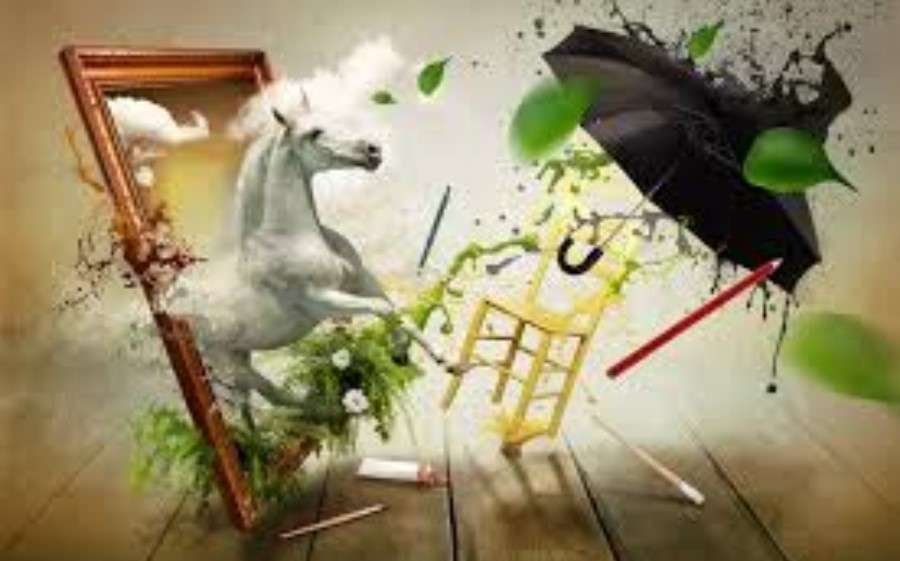
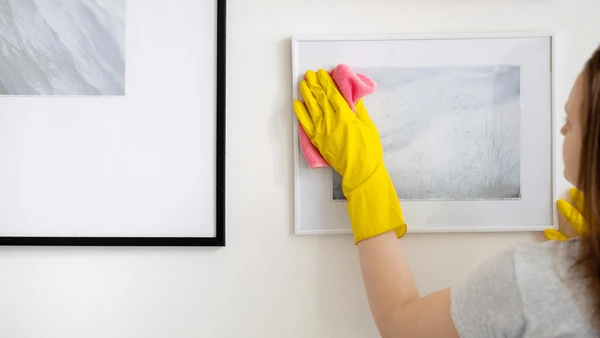
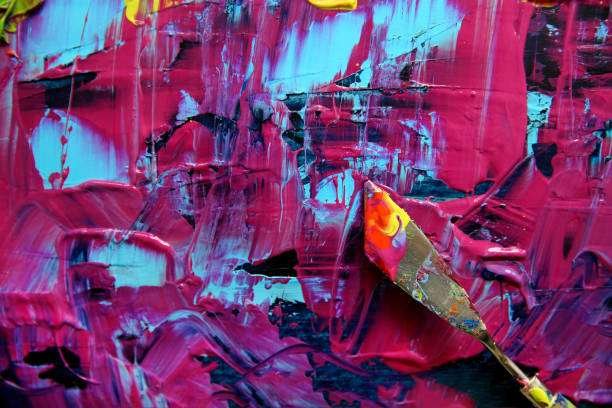


6 Comments
This blog has helped me a lot in making my assignment. Thanks for sharing.
Bohat zabardast tareeqe se visual art ke types aur style samjhaye gaye hain.
Wah, visual art ka itna acha overview diya gaya hai, mazay ka blog hai
Visual art is such a vast field, and this blog made it easy to understand its richness.
Yeh blog bilkul beginners aur art lovers ke liye perfect hai, bohat acha likha
This blog beautifully captures the diversity and depth of visual art, truly inspiring.